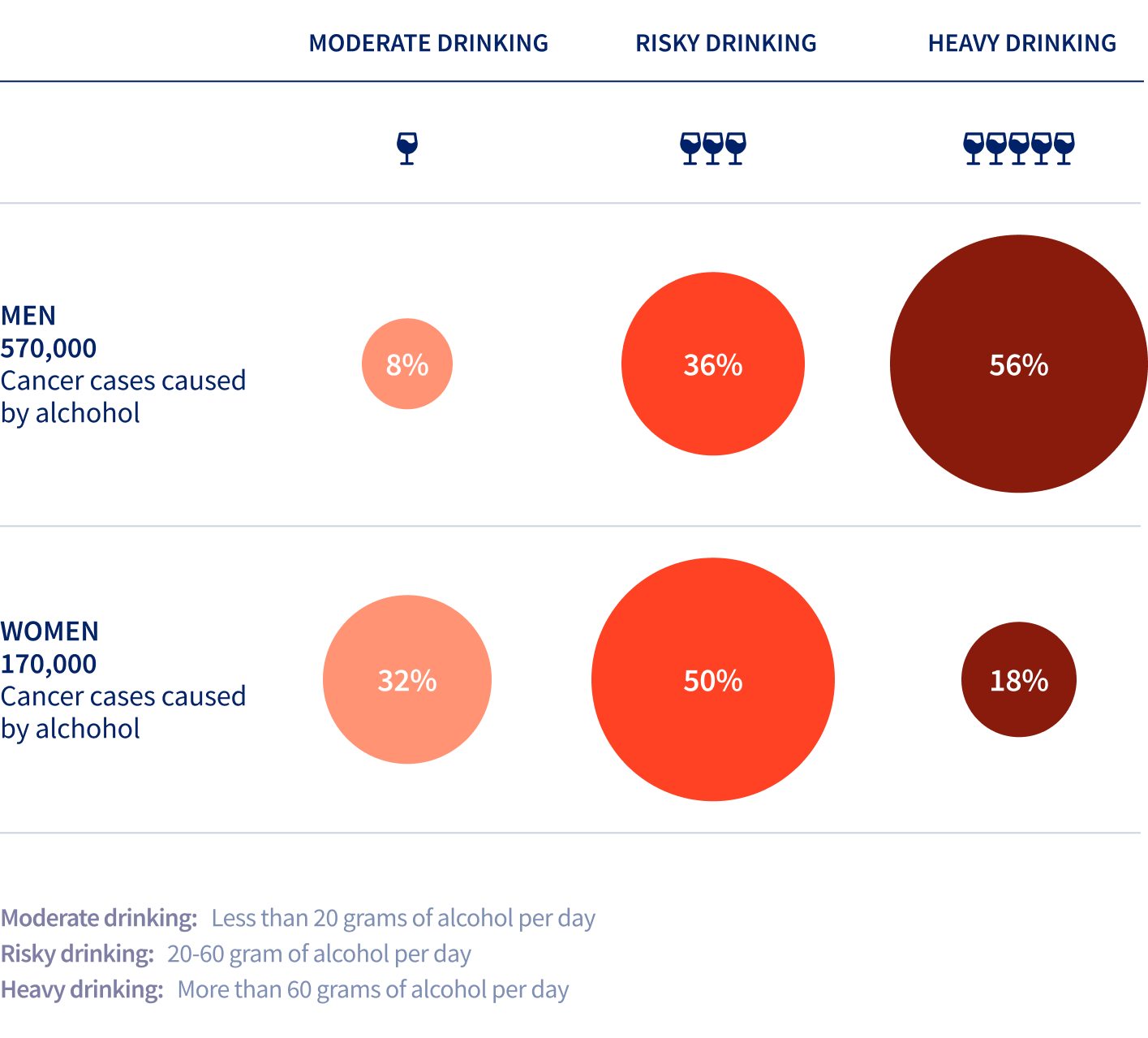Alcohol
We have known for decades that alcohol causes cancer, yet most people are not aware of the connection.
Ethanol – the primary form of alcohol in alcoholic beverages – is the most widely used psychoactive substance globally. In 2019, the average annual amount of pure alcohol consumed per adult aged ≥15 years ranged from <2.5 liters in some countries in Africa, the Middle East, and Southeast Asia to >12.5 liters in some countries in Eastern Europe (Map 7.1).
Every year, over 740,000 men and women develop cancer due to alcohol consumption worldwide.
Alcoholic beverage consumption causes cancers of the oral cavity, pharynx, larynx, esophagus, upper aerodigestive tract, liver, colon, rectum, and female breast. All types of alcoholic beverages can cause cancer. Any amount of consumption increases the risk of oral cavity, pharynx, larynx, esophagus, and female breast cancer. A reduction or cessation of alcohol consumption can reduce the risk of both oral and esophageal cancer.
In 2020, an estimated 741,300 new cancer cases were attributable to alcohol consumption (4% of all new cancer cases) globally, with three-quarters of the cases occurring in men. Esophageal cancer among men (29%) and breast cancer (57%) among women were the biggest contributors to the alcohol-attributable cancer cases (Figure 7.1).
Estimated number and proportion of cancer cases attributable to alcohol consumption worldwide by sex, 2020
MALES
FEMALES
The cancer types with the largest attributable fraction due to alcohol vary by level of Human Development Index (HDI): colorectum and breast were the main contributors in very high HDI countries, oral cavity and esophagus in medium HDI countries, and esophagus and liver in low HDI countries (Figure 7.2). This variability may be due, at least in part, to variations in per capita alcohol consumption and the prevalence of other risk factors that have synergistic effects with alcohol consumption on cancer risk (e.g., tobacco use and hepatitis virus infection).
Estimated number and proportion of cancer cases attributable to alcohol consumption by four-tier Human Development Index (HDI), 2020
VERY HIGH HDI
HIGH HDI
MEDIUM HDI
LOW HDI
“Wine hath drown more men than the sea.”
While most (92%) of the alcohol-related cancer cases in 2020 globally were attributable to risky (defined as 20-60 grams of ethanol/day) or heavy drinking (>60 grams of ethanol/day) among men, nearly a third (32%) were attributable to moderate drinking (<20 g of ethanol/day) among women (Figure 7.3).
Proportion (%) of new cancer cases attributable to alcohol consumption by sex and consumption levels, 2020

Overall, the burden of cancer due to alcoholic beverage consumption is substantial, yet public awareness of the link between alcohol consumption and cancer remains low. Promoting alcohol reduction or cessation could have a considerable impact on reducing cancer morbidity and mortality. Toward that end, the World Health Organization (WHO) has identified five cost-effective interventions to reduce alcohol-related harms as part of the SAFER intervention program (Figure 7.4).
WHO SAFER Initiative – Interventions to prevent and reduce alcohol-related harm
